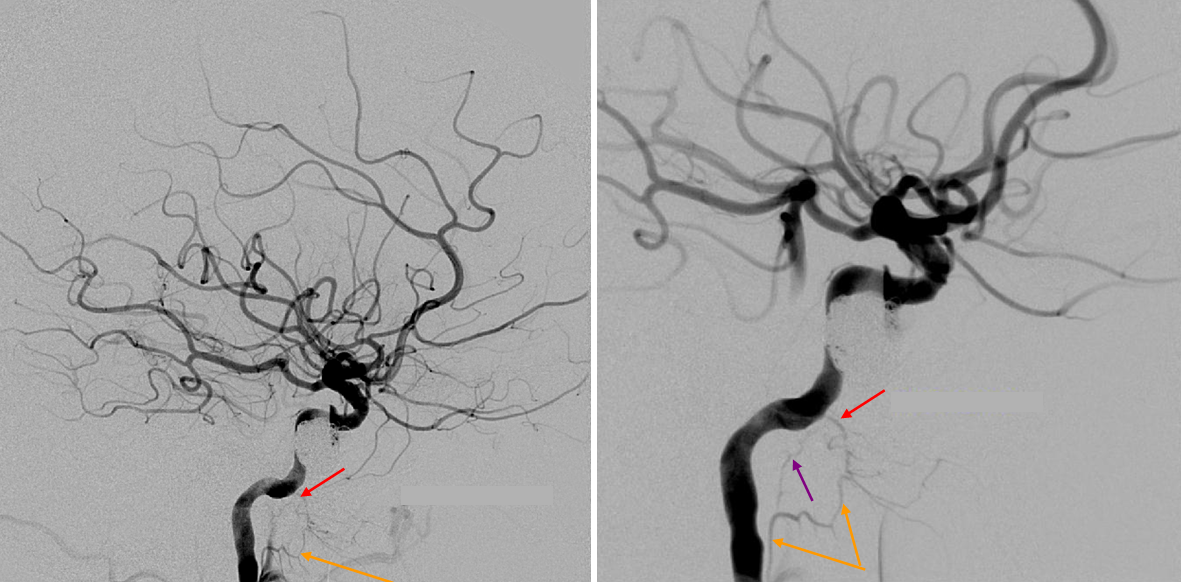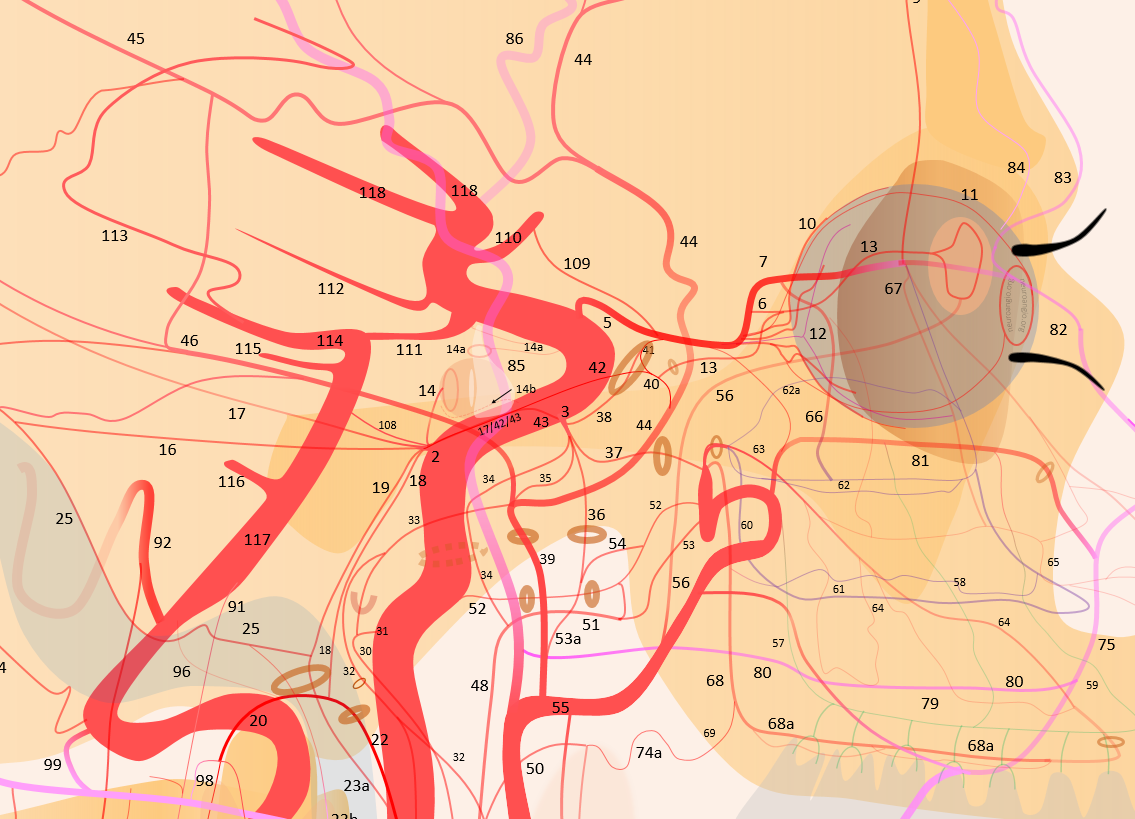
34 — artery of foramen lacerum
Typically very small branch, extending between the superior division of the pharyngeal trunk of the ascending pharyngeal artery (51) and the cavernous ICA. Classically connects to the ILT (2). Usual supply is from the ascending pharyngeal, however as we always say it is a network, so supply can be visualized from either AP or ICA.
Is one of the “dangerous EC-IC anastomoses”. Very tiny usually and so rarely a problem.
Can be often involved in supply of JNA — Juvenile Nasopharyngeal Angiofibroma — an extremely vascular tumor that is essentially unresectable without a good preoperative embolization
Here is one (34, master diagram) supplying a JNA — as you can see it is seen from ICA injection, and does not extent to the ILT — they dont read books. Full JNA embo case here.
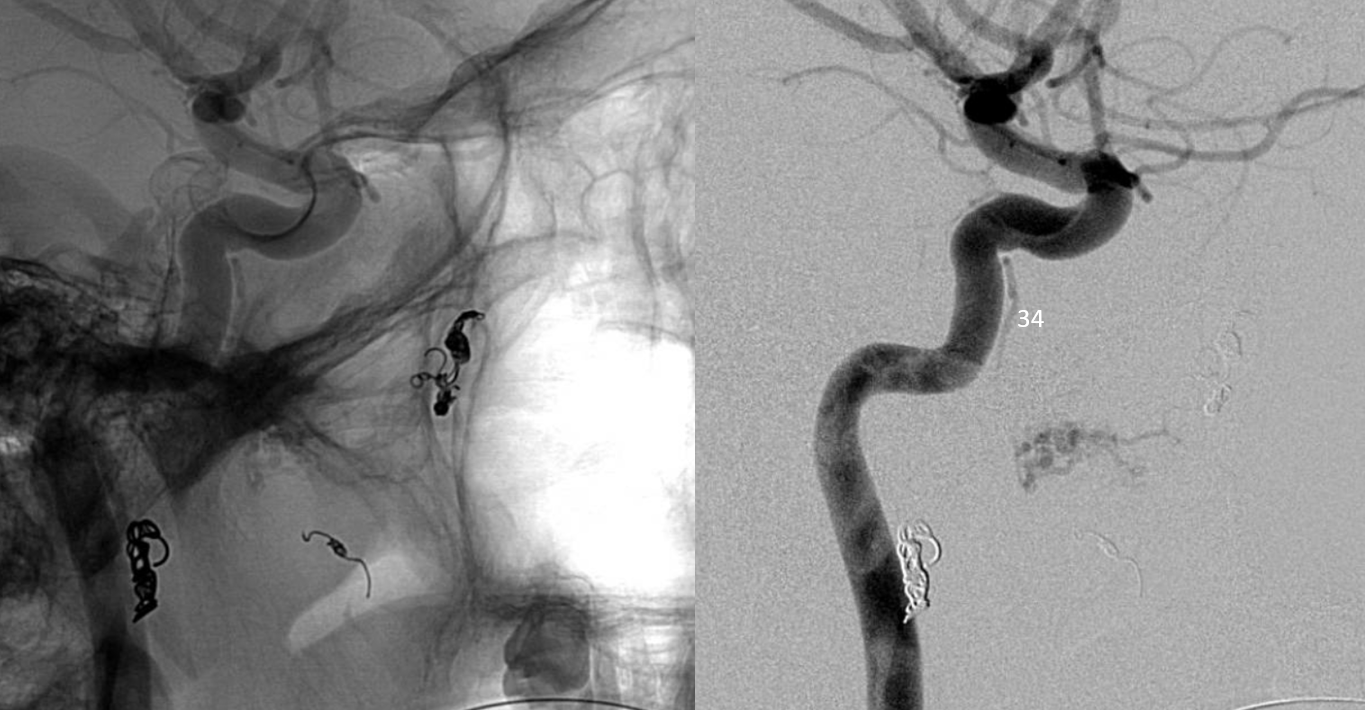
Remarkably it can be seen on the MRA as well
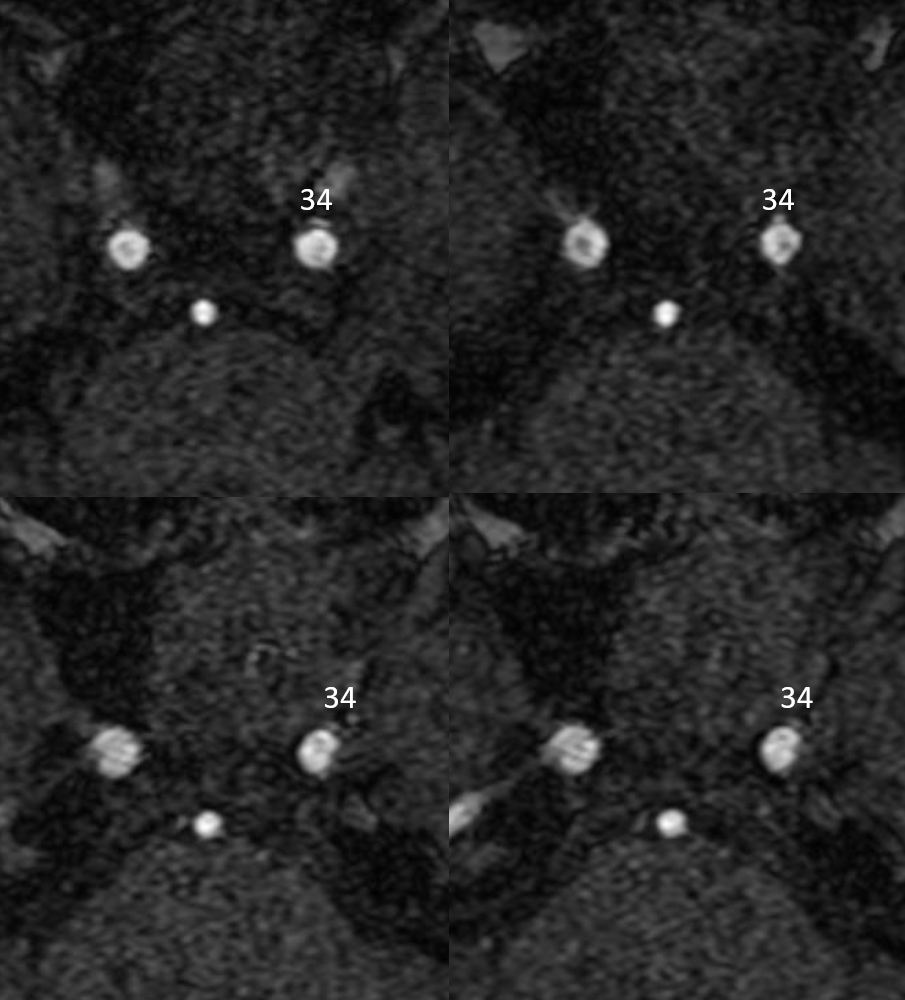
Another example off the Ascending Pharyngeal master page
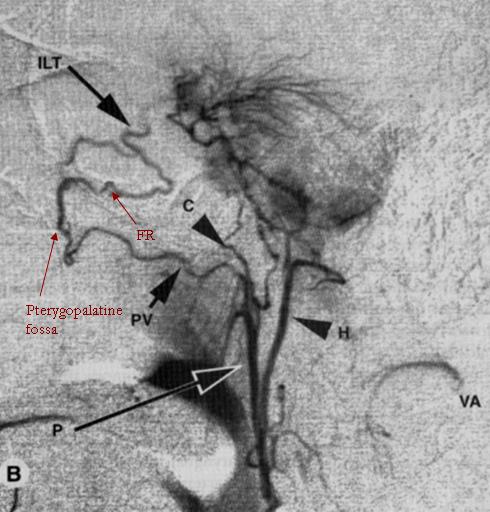
This remarkable lateral angiogram demonstrates multiple extracranial-to-intracranial anastomoses of the pharyngeal division. A pterygovaginal (Vidian) anastomosis of the AP artery leading to the pterygopalatine fossa, from where the artery of foramen rotundum (FR) re-enters the cranium to supply a meningioma and collateralizes with the Inferolateral trunk of the cavernous ICA. The carotid branch (C) a.k.a. artery of foramen lacerum is also nicely visible. The hypoglossal division (H) contributes extensively to supply of the meningioma. Muscular collaterals to the vertebral artery are also present (VA) Image taken from Lasjaunias and Berenstein, first edition.
Another example — two lateral views of internal carotid injection demonstrating a mandibulovidian artery (52) (red) collateralizing with superior division of the ascending pharyngeal (orange). The foramen lacerum branch (purple) is also visible
